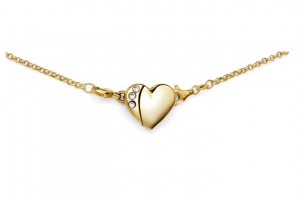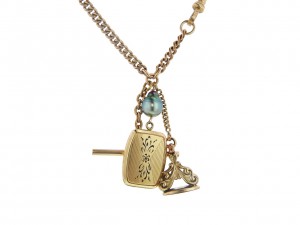One of the biggest changes of the internet age is hardly ever mentioned: people without formal training in graphic design produce a huge percentage of all the visuals we see today. That's not necessarily a good thing.
It started when computerized design became accessible in the mid '90s. Soon, everyone who could figure out the software started calling themselves graphic designers. But one can know how to use Photoshop or Illustrator without any understanding of the principles of good design. The situation became more dire in the mid '00s, when tools like Visme, Stencil, Canva, and Crello became available. Don't get me wrong — there's nothing wrong with those tools At my company, we subscribe to the Adobe suite for all marketing staff - but we also use Visme. Cloud-based design tools are a great way to quickly create graphics, and if you use the templates, you also have some built-in guidelines for good design.
Just last week I was helping a client interview for a new marketing staff position, and the fellow we were interviewing was presenting himself as a graphic designer. So we asked about his training, since his degree was in computer science. There are lots of great graphic design certificate and online programs that he could have attended, or he could have trained at the side of a skilled graphic designer. But he didn't have any graphic design training. What he was basing his skills claim on was deep knowledge of Illustrator and Indesign, and the fact that he makes websites. So, we looked at some of his sites together, and while they were functional, they didn't demonstrate knowledge of visual design principles. He wasn't even aware that such a thing as graphic design principles exists.
Becoming a skilled graphic designer takes a solid education and years of practice - ideally working with mentors who are skilled themselves. And working with an accomplished graphic designer is a true delight. The best of them are visual problem solvers, capable of taking the words and intention of a message and turning it into rich expression.
But if you don't have a graphic designer on staff, or the budget to work with a professional — or maybe you do, but you still need to create a lot of additional graphics for demanding social media channels — then you need a basic understanding of the principles of graphic design. Even if you don't do any of your own graphics, understanding these principles will make you a better collaborator with your professional designer. So here you go: 36 minutes of graphic design principles, for a topic that merits months of study and a lifetime of practice.
Transcript
As more and more business owners create their own advertising using tools like Canva and Visme, it’s become clear that most people do not understand the components of a good advertising layout. Though the internet and digital advertising are relatively new, and rules have been adapted to accommodate new media, the principles of good design remain consistent, and have been studied and refined over nearly 100 years of practice. Color theory, the use of shapes, eye-path (sometimes referred to as “movement,”), and composition are all elements you must understand to make your ads effective. There is a huge difference between putting information on a page and creating information that is visually appealing AND effective.
Let’s start by defining design.
When we design something, we are creating it for a particular purpose or effect. If you design kitchen utensils, you are concerned about form – how does it look, how will it look in a certain type of décor – and function – how does it work, how well does it do the task for which it is intended?
When you design a room, both form (how does it look, how does one move through it) and function (does it serve the purpose for which it is intended) matter.
And when you design jewelry, you are expressing those same ideas – form and function - in a wearable medium.
This idea of designing for a purpose – of requiring that you meet both form and function – is the main thing that separates design from art. Art can disregard function, can turn function into farce, or can be entirely without function. Art is all about form. Design must include function.
The main purpose of graphic design is communication. Communication. The essence of good graphic design is that it uses both form and function to bring someone to understanding something they did not understand before, or to be interested in something in which they were not interested before.
The fundamental purpose of graphic design is to make something easy to use or easy to understand. Yes, we can do that with words, but when we take those words and make them into visual images, they can be so much more powerful, not to mention accessible.
Some graphical elements are obvious without previous exposure. For instance, CLICK the handwashing sign and the wheelchair access sign are clear without any further explanation. Other signs, CLICK like this Bouy sign, need some imprinting. If you’ve spent much time around water, you’ve probably seen it and know what it is.
In fact, one of the earliest forms of modern graphic design was signs. Signs are a form of universal language.
Most of the discipline of graphic design is wrapped up in the elements of visual hierarchy, because visual hierarchy plays a primary role in planning the structure of any ad (or environment, like a website) you create. Good visual hierarchies guide the viewers through the information you want them to see in the order you want them to see it. Good visual hierarchies ensure that if a viewer only retains a small percent of the ad, the part they remember is the part that is most important to you as the advertiser.
The best article – and related infographic - I have ever seen on the 12 principles of visual hierarchy was done on the design software Visme’s blog, written by a graphic designer named Samantha Lile. I share some of their content here, but you really need to read the full article and save the infographic for yourself. The link is on your slide.
The first rule in visual hierarchy for graphic design is that size – and more importantly, RELATIVE size, is the fastest, most effective way to emphasize visual elements. Sizes determine the order that the human eye follows in an ad. It helps the viewer to recognize some things faster than others, and to retain some information better than others.
Here are two more excellent examples of how to use size in creating visual hierarchy. On the left, you see an advertisement for Bentley. If this had been a consumer ad for cars, there’s no way the car would have been so tiny and the word “next” so large. But the intended target for this ad was people interested in the research & development and production capabilities of Bentley. The ad was perfectly structured to put the attention on the right element – the innovation and forward-thinking behind Bentley automotive. In the second example, the use of size perspective helped drive the message home that no trash – even small, biodegradable items – is “small” trash (no hay basura pequeña). The lime image is also a great example of the use of perspective, which is our next visual hierarchy example.
AS they point out in the Visme blog, the use of perspective creates an illusion of depth. Just as a visual element, that’s interesting. But depth is more important than simply creating visual interest. We can also use the sense of depth in an ad to make ads more relatable to the viewer. Depth can change the feeling of an ad by making it more dimensional. Images that are more dimensional are more visually interesting and more memorable – and we want ads to be both. Also, as in the lime ad in the previous slide, perspective can take something that would have been an afterthought in a more typical image, and turn it into the main point.
This is a brilliant example of perspective (also from the Visme blog). Most shoe ads focus on images of the shoes (from the top, naturally), or of people running in shoes. Pirelli used perspective to make the walking the focus of the ad. The ad instantly makes you wonder how the shoes feel as they hit the ground. It makes you wonder what type of ground the shoes are hitting. It does more to put you IN the Pirelli shoes than any shoe commercial I’ve ever seen. Perspective can make you FEEL the product, and that’s why it’s important in visual hierarchy.
The next visual hierarchy example in the Visme blog is about color and contrast. It doesn’t take much explanation to understand that using contrast and color make focal content pop out. But we use color and contrast for more than providing direction and readability. The use of high contrast also aids in RETENTION of information, and retention is a precious commodity in a world where the average viewer sees 5,000 ads per day.
We are all aware that colors have psychological import - though be cautious about your color interpretations – they are not uniform across cultures. The interpretations shown here represent the primary western interpretations. So thinking through
Of course, color goes far beyond the basic Hue, which is where each color sits on the color wheel. Hue refers to the origin of the colors we can see. Primary and secondary colors – yellow, orange, red, violet, blue, and green are hues, as are the tertiary colors – which are mixed colors where neither color is dominant.
But each color also has a broad range of moods which can be expressed through different levels of saturation and value.
Saturation defines the brilliance and intensity of a color. As saturation increases, the colors appear to be more pure. When you lower the saturation of a color, it becomes progressively more gray.
Value has to do with how light or dark a color is. You can add black to a color to shade it darker, or you can add white to a color to tint it lighter.
Understanding color, and specifically, how most people interpret color, is very important for anyone who plans to communicate a message using graphics – a message they want the target to visually and mentally engage with, and once engaged, to understand the way you meant them to understand it.
As you’ve already seen, fonts can be used as part of size and perspective in visual hierarchies, but they also matter on their own. Each font is itself a design element, and can express ideas and feelings in addition to the words they spell out.
Fonts as a design element could be the subject of an entire presentation all by itself – well, that’s true of each of these elements. But I’ll focus on just a few important points for this discussion.
First, every brand must have a brand guide that dictates which fonts to use for the brand. Those fonts should be used in every situation EXCEPT for when a different font is required to get a message across. For instance, If you recall the Bentley Megafactory ad we looked at earlier, the font in that ad isn’t the font in Bentley’s brand book. But if you go to Bentley’s website, their fonts are used throughout the website.
So for larger format advertising, like a website or an annual report, the brand fonts should be used.
For ads, use fonts that best express the messaging of the ad (which could mean the brand fonts, if you’re sending a pure brand message). But it could also mean some more expressive fonts related to the point of the ad.
Finally, when it comes to fonts, less is always more. An well-designed ad can certainly express the idea of “chaos,” but the ad itself should never be chaotic – and one too many fonts can take a perfectly coherent message and make it messy and even unintelligible.
One of the biggest mistakes most non-graphic designers make is the mistake of filling up all the space. Space in an ad isn’t an empty place that needs filling. Space IS a graphic element, and it can be used to direct the eye, influence emotion, and emphasize your message.
The most basic understanding of space in advertising is that you want to use the space around content elements to draw attention to particular elements. As you can see in this example from the Visme blog, where your eye focuses on the image in the left is a tossup between the astronaut and the moon. It’s not clear where the ads “wants” you to focus. But the image on the right makes it pretty clear that the focus should be the astronaut. They didn’t make the moon smaller – they just created much more space above it, which drew the eye to the astronaut and the idea of “space” itself – rather than the moon. Of course, size and perspective are also used in this example.
Space can also be used as a message itself.
One of the most referenced examples of this graphic design technique is the FedEx logo, where the space between the E and the X is used to create an arrow – a very literal, and cheeky, reference to FedEx moving packages. The graphic designer of this element must have been particularly pleased with her or himself, because the arrow also aludes to the graphic design principle of “movement,” which is also achieved by thoughtful use of space.
The use of negative space can be quite elegant. It’s another way of using space to create emphasis. In my experience, it takes a particularly refined awareness of the relationships between items and space to create strong negative space image.
As with everything in graphic design, less is more. You want to strip down your elements to only the most important for conveying your message.
Another important consideration in your graphic design is where elements appear in relation to one another. In its most basic sense, it helps the viewer make sense of the relationships and their relative importance to one another. Either of the images in the above graphic could be “correct”. If you were trying to make a point about female employees relative to make employees, you might use the image on the left. If you’re trying to make a point about teams of employees, you might use the image on the right. As with everything in graphic design, the intention of the message is what matters here.
Here’s another excellent example of the use of proximity, with a strong assist from the element of perspective. This map sends a strong message about how close together two continents actually are when you use FedEx. It also is yet another reminder of how great the graphic designers are that work on FedEx campaigns.
If you want to make your viewers uneasy or uncomfortable, fail the alignment test in your graphic design. Even though most people can’t tell you why it makes them feel uneasy, they feel it. Alignment provides order to your design. It relates to everything from how elements are arranged in space to how text is aligned.
There is no rule that suggests one type of alignment is better than the others. Text can be aligned to the left, center, or right, with or without “ragged” edges on the unaligned side or sides (both sides are going to be ragged in center aligned text. Graphical elements can also be aligned with left, right, or center orientations. What’s important is that the elements not look completely scattered and random like the image on the left. If you go out and look at nature, you will find that its patterns are remarkably ordered. Our human eye seeks alignment to guide it, and our psyches seem to find some comfort in the order that comes from alignment.
The rule of odds – which can be applied to a remarkable array of things, not just graphic design or photography – suggests that using an odd number of options or elements can create more focus and “stickiness” than using an even number.
You can apply the rule of odds to the number of elements in your graphic, or you can use it as a rule of thirds, and separate your palette into three equal sections.
The example here is about using odds in your composition of elements. This is one of the illustrations from Ed Verosky’s excellent tutorial on still-life photography. Each one of these elements, even if it includes an even number of objects, uses the rule of odds to create balance and focus. The relationship between objects conveys a lot of information very fast – beyond the objects’ relationships to one another, the relationships also suggest mood, energy, and movement. Using the rule of odds helps make your message more coherent, no matter what you’re trying to convey.
This example is also representative of the rule of odds – only instead of dictating how many objects are used in the design, it uses the 3-part grid to compose its message. A similarly beautiful photograph, cropped less thoughtfully, would have far less energy and movement.
AS I’ve mentioned already, the average person sees 5,000 ads in a day, which means anything we can do to increase retention is extremely important Repetition can achieve that – it can increase comprehension and retention.
Repetition isn’t just something to use on one page though. It can be used in design to create cohesion among elements that are essentially different in shape or kind, things that otherwise would be hard to see as grouped together. For that reason, repetition is one of the favorite graphic design elements of packaging designers.
Shapes, objects, and font treatments like chapter headings and subheadings all benefit from repetition to increase both focus and retention.
Some of the best graphic designers I have ever worked with shared a similar trait of drawing dots or lines through their sketchpads before dropping elements onto the page. Once they had conceptualized the message, they had an idea of how they wanted to direct the viewer from their first encounter to comprehension. They used lines and grids to get that initial thought on paper.
As you saw earlier in that fabulous beach image, and can see again here in this illustration from Visme, lines can be literally present on the page, or they can be used suggestively through the use of a grid. In the first image, we can tell the man is running. In the second image, we FEEL like the man is moving. The imaginary line of the design is moving him right off the page.
In his excellent book on graphic design for children, Chip Kidd gives the best example for understanding form. He suggests that you try to imagine yourself as a tiny baby without language. All you can do is perceive forms, and you try to interpret them. Colors, sizes, intensity, relativity – it’s all there, but what to make of it? Eventually, you put language with form, but in the beginning, everything is just form.
As a graphic designer, you try to back away from the implicit meanings of things and experience the forms without the words. How do the elements on the page, on the screen, or on the billboard make you feel? What is your impression of how things look?
Beyond visual hierarchies, there are some other things that must be considered in all graphic design activities. One of these is the idea that form follows function.
This is a graphic from Chip Kidd’s book . It’s the best example I’ve seen of how to understand the relationship between form and function.
Function is determined by solving the design problem. You ask the question “What is the content’s purpose? What is it trying to do? This purpose is called function. And once you determine it’s function, then its form – or what it is going to look like – should follow.
Graphic design is visual problem-solving. I need to get a message across, and I need to find the fastest, most impactful, most memorable way to do it. There is also a discipline called “design thinking,” which evolved out of many different design disciplines, and is a cross for creative problem solving. On this slide, you see the main 5 questions of design thinking. I like to keep these questions in mind when I am trying to solve a design problem – graphic or otherwise.
And that’s it! Those are the principles of design I wanted to talk about with you today. With these principles in mind, you can do a much better job of creating graphics to promote your business. Even if you aren’t the person doing the design, even if you’re working with a graphic designer, understanding these principles will help you give them better direction, and it will also help you better understand what your designers create based on your direction. And remember – just because something looks pretty, doesn’t mean it’s good design. And just because something looks plain, doesn’t mean it’s bad design! I hope you enjoyed this information, and thank you for your time and attention!


 Here are just a few of the more comprehensive writings on this topic:
Here are just a few of the more comprehensive writings on this topic: Until fairly recently, these grids were always static, which means that the elements were in a fixed position to one another. If you view a static grid website from a mobile phone, you will have to scroll to the right if you want to go from the logo to the header content.
Until fairly recently, these grids were always static, which means that the elements were in a fixed position to one another. If you view a static grid website from a mobile phone, you will have to scroll to the right if you want to go from the logo to the header content. I have a Gucci chain bracelet that I never take off. Yes, it has sentimental value, but that's not why I never take it off. I never take it off because it's so hard to put on again. I have tried several of the bracelet holders I've seen in the past - and once even made one for myself - but nothing ever worked quickly and without ticking me off.
I have a Gucci chain bracelet that I never take off. Yes, it has sentimental value, but that's not why I never take it off. I never take it off because it's so hard to put on again. I have tried several of the bracelet holders I've seen in the past - and once even made one for myself - but nothing ever worked quickly and without ticking me off. I had found my non-jewelry fun-find of Jewelry Week! Usually my heart is won by technology or a machine, but Fairy Fastener is a great example of both smart product design and very smart business women.
I had found my non-jewelry fun-find of Jewelry Week! Usually my heart is won by technology or a machine, but Fairy Fastener is a great example of both smart product design and very smart business women. Julie Romanenko (AKA Just Jules) is well-known for finding the best vintage lockets in antique markets around the country, then remaking them into modern designer jewelry. These lovely lockets are one of her two signatures, and they tie her passion for finding and restoring treasures to her passion for designing jewelry. Her second (equal) signature is her jewelry line, which brings vintage design elements to a deliciously classic, modern look.
Julie Romanenko (AKA Just Jules) is well-known for finding the best vintage lockets in antique markets around the country, then remaking them into modern designer jewelry. These lovely lockets are one of her two signatures, and they tie her passion for finding and restoring treasures to her passion for designing jewelry. Her second (equal) signature is her jewelry line, which brings vintage design elements to a deliciously classic, modern look. This is a clear score from a merchandising standpoint, because it makes the line more cohesive and strengthens her identity as a designer. It's also a score from a marketing standpoint. The demand for personalized and unique items is higher than ever, so by using antique pins for the bands, Just Jules' bridal rings are truly one-of-a-kinds. Her play on the concept of "something old" for the bride is also delightfully creative.
This is a clear score from a merchandising standpoint, because it makes the line more cohesive and strengthens her identity as a designer. It's also a score from a marketing standpoint. The demand for personalized and unique items is higher than ever, so by using antique pins for the bands, Just Jules' bridal rings are truly one-of-a-kinds. Her play on the concept of "something old" for the bride is also delightfully creative. When products are successful it's always due to more than the product itself. Business and market savvy are essential elements of success. Go see this terrific example of beautiful design and smart business sense at the Couture Show, in the Next Wave salon.
When products are successful it's always due to more than the product itself. Business and market savvy are essential elements of success. Go see this terrific example of beautiful design and smart business sense at the Couture Show, in the Next Wave salon.